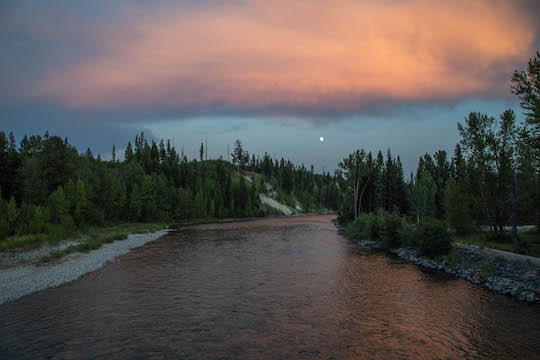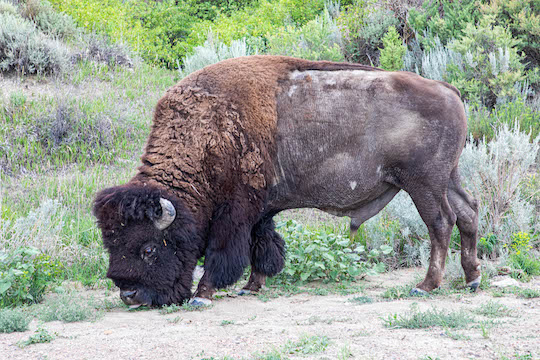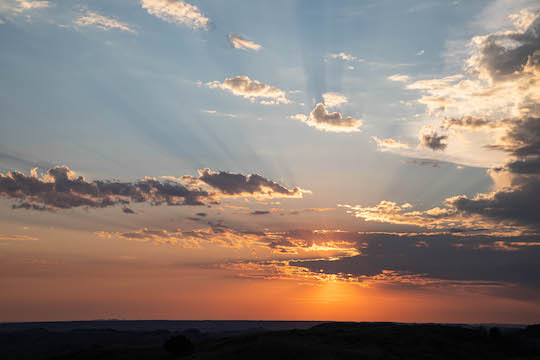One of the highlights of fall fishing, at least for me, is finding reliable emergences of Blue-winged Olives. Back in Tennessee, the small mayflies would show up on occasion, but here in Colorado it is not an if or a when but rather a given. The little BWOs are so reliable on some waters that you can tell when the hatch is about to start based on when all the fishermen show up. In other places, the hatch is a guarantee, but the timing might be a bit more unpredictable.
My first memory of hitting this hatch in Colorado is from Clear Creek last September. The little
browns were rising with abandon in the shaded pool where the stream hugged the cliff on the south bank. Every now and again, a larger specimen would rise, leaving a subtle rise that was clearly the work of a more experienced trout than most of the splashy efforts I was seeing. I fished a little Sparkle Dun, a #18 if my memory is correct, and the trout would eat if I showed them a clean drift.
Last spring, one particularly drizzly day found me torn between the BWOs and throwing streamers. Most people who know me can guess that streamers won. I'm still not sure whether or not that was the right choice. Every single pool had numerous fish rising to bugs struggling to get off the water into the chilly mountain air. The meadow stream eventually
yielded a fine brown to my streamer, but I still wonder how the day would have been if I had fished a BWO the whole time.
Most recently, on a trip to the Arkansas River tailwater in Pueblo, I stumbled into one of the more epic hatches I've been blessed to fish. Deciding to put my Colorado State Parks sticker to good use, I parked at the Valco parking lot. An early morning departure had me rigging up in air temperatures that had just edged above the freezing point. A fleece kept me warm while I started working my way down the river to explore new water. The number of fishermen out was impressive, but finally I started to find water I could call my own.
Deep water nymphing was turning up very few fish, and I began to wonder if the decision to get up ridiculously early and drive all the way to Pueblo was a sound one. The occasional tug on the line from small to average stockers was not really helping my mindset. Once it warmed up, my mood gradually improved however. I stumbled upon a family of deer in the brush along the river and was reminded to look for the little things that make a trip great. It wasn't before I had finally wandered down close to the bridge that I noticed a few fish rising in the slack water along the far bank.
Refusing to acknowledge the possibility that it was time to change tactics, I stumbled on down the river. Crossing at a point of shallow riffles to search for that deep run that I just knew had to exist and would be loaded with big trout, I saw a few BWO duns floating along.
That's what they were eating back there. Still stubborn, I found a pool perfectly suited to my nymph rig. Running the flies through time after time, I saw a few rise rings just downstream, then another a bit closer. Not wishing to ignore the obvious for too long, I walked a few yards down to a nice long flat with several rising trout.
Digging through my fly boxes, I chose a #20 Parachute BWO with a hi-vis post that I tied a few months ago. Extending my leader to end in 6x tippet, I was now ready to go head-to-head with these annoying trout. Since when does any self-respecting trout ignore my delicious sub-surface offering of midges and BWO nymphs anyway? After a few casts that did not produce a hit, I paused to observe. Suddenly it was obvious: the fish were rising in a consistent rhythm. Somehow I was drifting my fly past in between each rise.
I waited for a trout to rise, then waited for the next rise. Finding the rhythm, I waited until just before the next rise and then made the cast. The little fly floated for all of 3 feet before a chunky rainbow nailed it. The next couple of hours proceeded about the same until I started to get hungry.
Wandering back upstream, I came across the same little flat where I initially spotted rising fish. A huge wake from the back indicated that I had moved just a little too quickly for at least one large rainbow's liking. Slowing things down, I decided to retie. I had lost the Parachute pattern some time before. Several other patterns had fooled trout, but I wanted something extra for the large risers I was now stalking. A #20 Comparadun seemed appropriate. Testing the knot and checking the drag was the last step before beginning to cast.
Several casts later, another wake quickly exited the exposed shallows.
Slow down, find the rhythm. Refocused, I waited. There, right against the bank. The drift was particularly difficult since I was casting 35 feet across 2 different current seams and trying to drift the fly in the calm water outside the last current seam. Again and again I expected to spook the trout, but somehow luck was on my side, and it just moved up a couple of feet before rising again. Finally, the stars aligned. The fly dropped just outside the main current, drifted a foot and a half, and was inhaled. Six more inches and it would have started to drag. Knowing my luck had turned gave me more confidence. The beautiful 14 inch fish was not the owner of one of the large heads I had been watching another 20 feet upstream.
Releasing the fish, I again paused and observed. Two large trout, the kind that are big enough to get your pulse racing, were rising a good 45 feet up and across. To get a good drift, I took 2 steps forward...and saw yet another wake zigzagging frantically away.
One more chance. Finding the rhythm, I waited for the trout to rise once more, paused, then made one solid backcast before sending the fly on its way. The fish ate a natural 6 inches to the left of my fly. After a short pause to avoid spooking the fish, I lifted the line off the water, bought time with two false casts, and presented the fly again. This time the fish rose a foot below my fly. This went on for probably 30 casts. Every cast I expected to spook the fish, but apparently it was a day for fishing miracles.
Finally, the fly settled in 12 inches above the fish. My adrenaline shot through the roof as that big head I had been watching slowly appeared below
my fly. As I lifted the rod, I knew that this trout was mine to lose. The fish was smart, but it was also stuck on that shallow flat. Once, it made a heart-stopping run towards the fast riffles below, but somehow I got its head turned. When I finally slipped the net under the fish my day was complete. I released the gorgeous rainbow trout after getting a good picture, cradling it gently until it slipped off to battle another day.
Continuing upstream, I discovered that fishermen had been fishing hard with nymph rigs the whole day. The bugs only made it another 75 yards or so above that last hole. Sometimes, a fishing day's success is measured strictly on whether you go upstream or downstream. Thankfully, I went downstream...

















































































